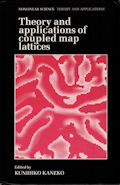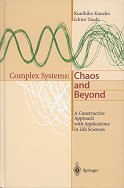A CML is a dynamical system in which there is some interaction (‘coupled’) between continuous state elements, which evolve in discrete time (‘map’) and are distributed on a discrete space (‘lattice’). This book investigates both the theoretical aspects and applications of CMLs to spatially extended systems in nonlinear dynamical systems.
CMLs provide a novel approach to the study of spatiotemporal chaos, pattern formation, and nonlinear biological information processing. Applications extend to general turbulent phenomena found in fluid mechanics, plasma and solid state physics, optics, and chemical reactions. In addition, because CMLs are adaptive to semi-macroscopic conditions and are numerically efficient, they are useful tools for simulating pattern formations, nonlinear waves and biological information processing (e.g. neural nets).
The book will be of interest to theoreticians in the physical, earth and life sciences.
After the introduction and general survey (K. Kaneko), the book covers the following topics: Renormalization group, universality and scaling in dynamics of coupled map lattices (S. P, Kuznetsov); Mean-field approximations. and Perron–Frobenius equations for coupled map lattices (J. M. Houlrik and M. H. Jensen); Complex spatiotemporal dynamics of chain models for flow systems (V. S., Afraimovich and M. J. Rabinovich); Chemical waves and coupled map lattices (R. Kapral); Statistical mechanics of coupled map lattices (L. A. Bunimovich and Ya. G. Sinai)


